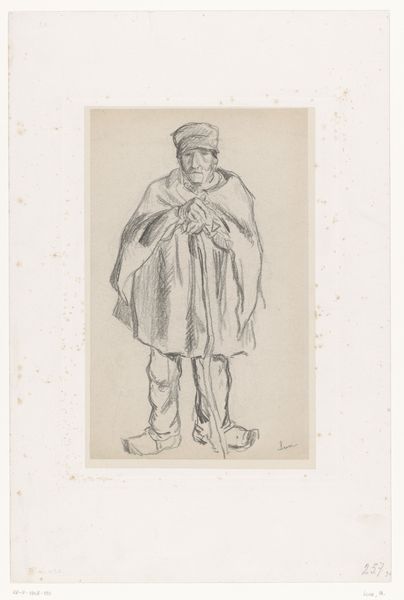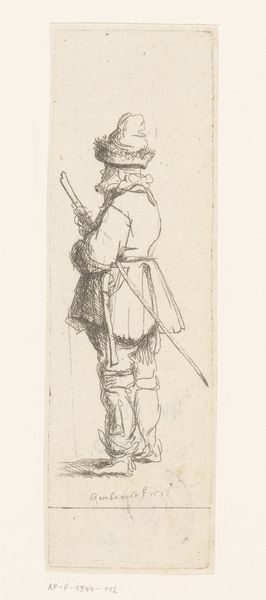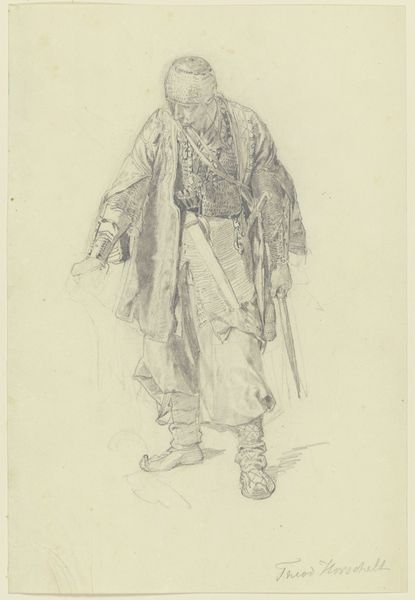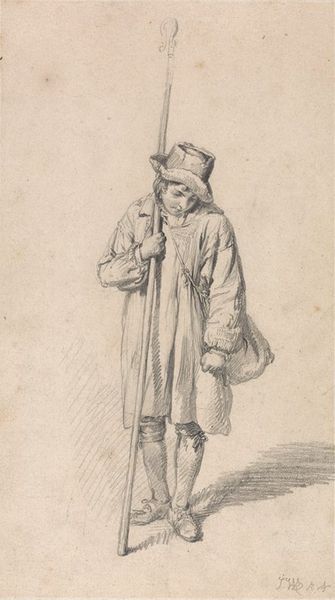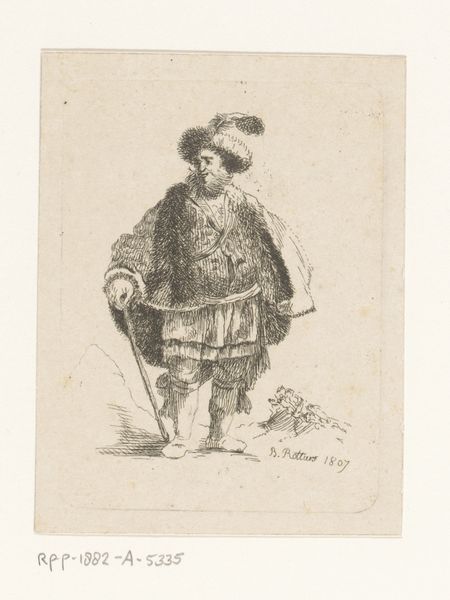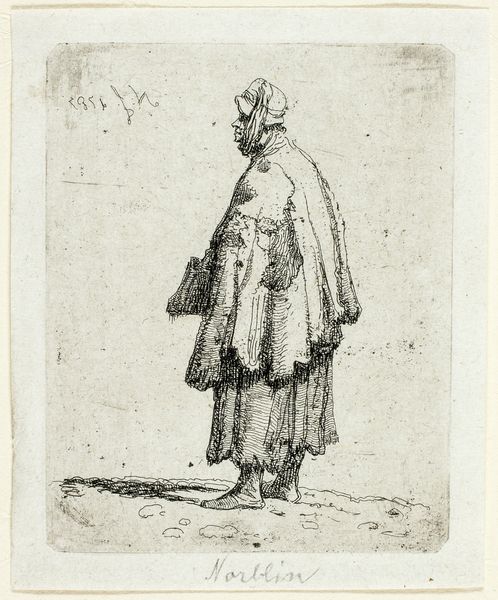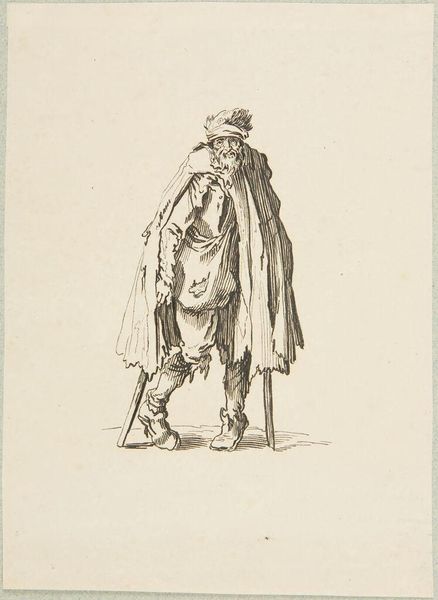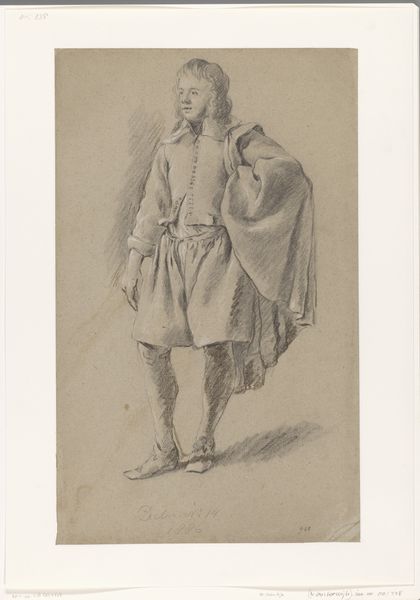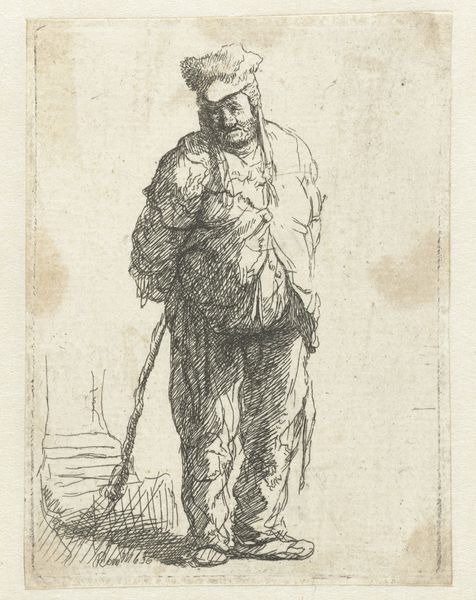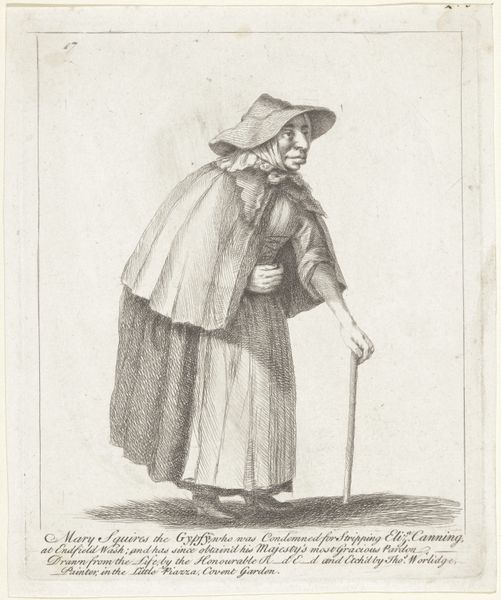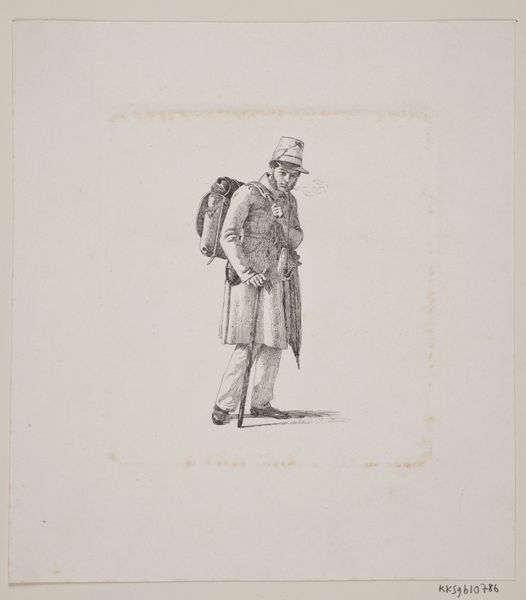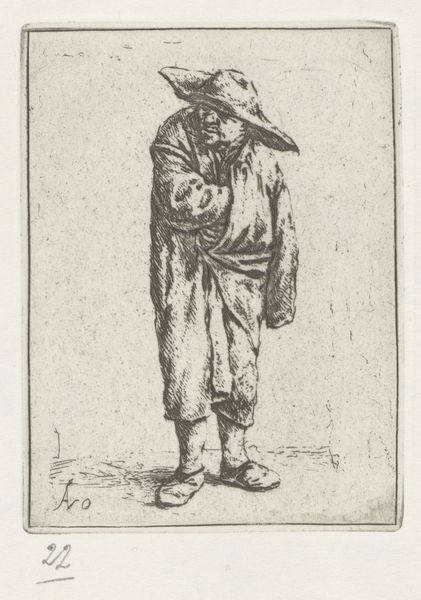
drawing, ink
#
portrait
#
pencil drawn
#
drawing
#
ink
#
pencil drawing
#
portrait drawing
#
genre-painting
Dimensions: height 130 mm, width 83 mm
Copyright: Rijks Museum: Open Domain
Curator: This is Jean Théodore Joseph Linnig's "Street Musician with a Hurdy-Gurdy," created in 1851. The artwork is a drawing, employing both ink and pencil. Editor: My initial impression is one of melancholic isolation. The musician's hunched posture and averted gaze create a sense of quiet introspection, maybe even resignation. You almost hear the sad song of the hurdy-gurdy... if you really try! Curator: Street musicians at this time occupied a very particular social space, they were entertainers, yes, but often associated with poverty and even social disruption. We can see that Linnig isn't really glorifying his subject. Editor: There’s something tender here, though, I think. He's rendered the musician's clothes with incredible detail. The folds in his cloak seem almost lovingly captured, and the light is kind on his face. Even in his presumed poverty, the guy has got dignity! Curator: You're right, there’s definitely empathy at play. The meticulous detail also reminds us that printmaking at the time helped disseminate images far and wide, democratizing art in some ways and bringing scenes from everyday life into homes. Editor: It’s interesting to think about where this image might have been displayed or found. And, I guess, what kind of stories did viewers create around this character when they looked at this piece in the quiet space of their homes? Did people offer alms to poor street musicians *after* seeing this image? Curator: Possibly, or maybe it reinforced some existing stereotypes. We can't truly know, but that tension is exactly what makes art of this period so engaging—it opens up a window to social complexities and challenges that people faced daily. Editor: Looking at it, I feel a little melancholy myself. But it’s that feeling of being connected through shared human experience, even over time. Like, *hey, we all struggle sometimes*, but it can all turn into a strangely sweet song when it ends up in an image like this... Curator: Yes. Art provides an important access point to our social past, and sometimes those echoes resonate more strongly than others. This Linnig, even in its quiet simplicity, is rather resonant, indeed.
Comments
No comments
Be the first to comment and join the conversation on the ultimate creative platform.
